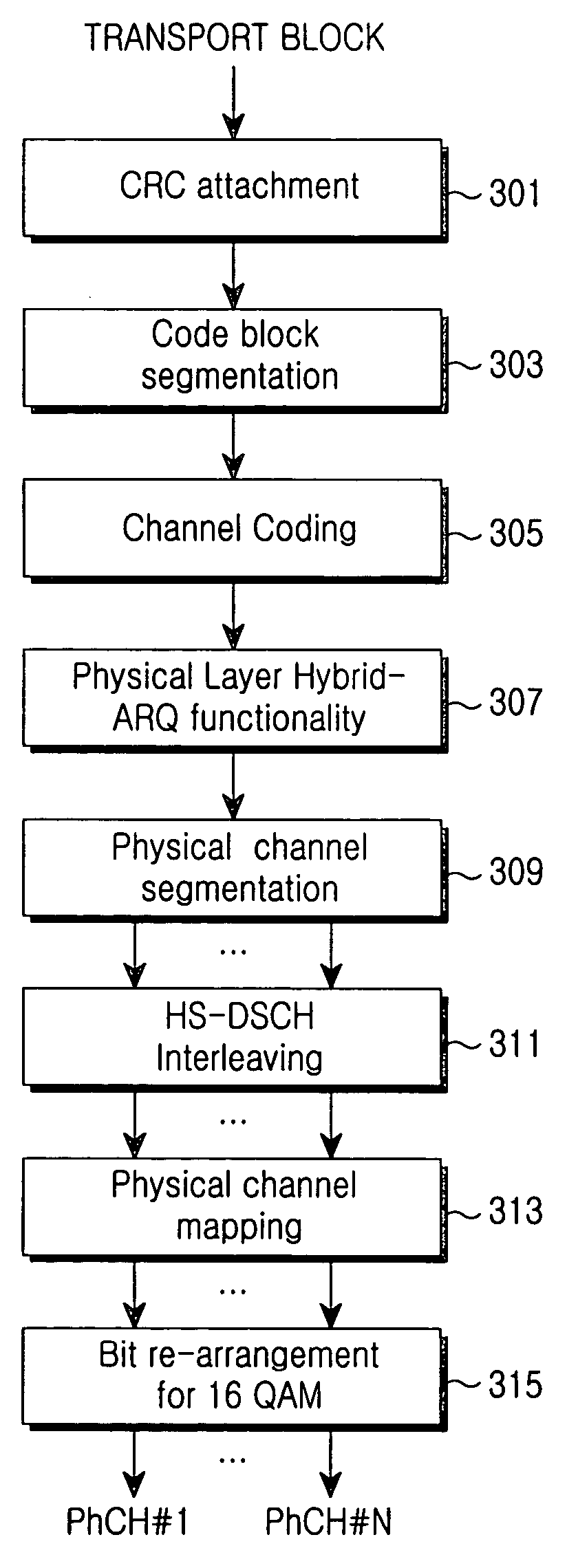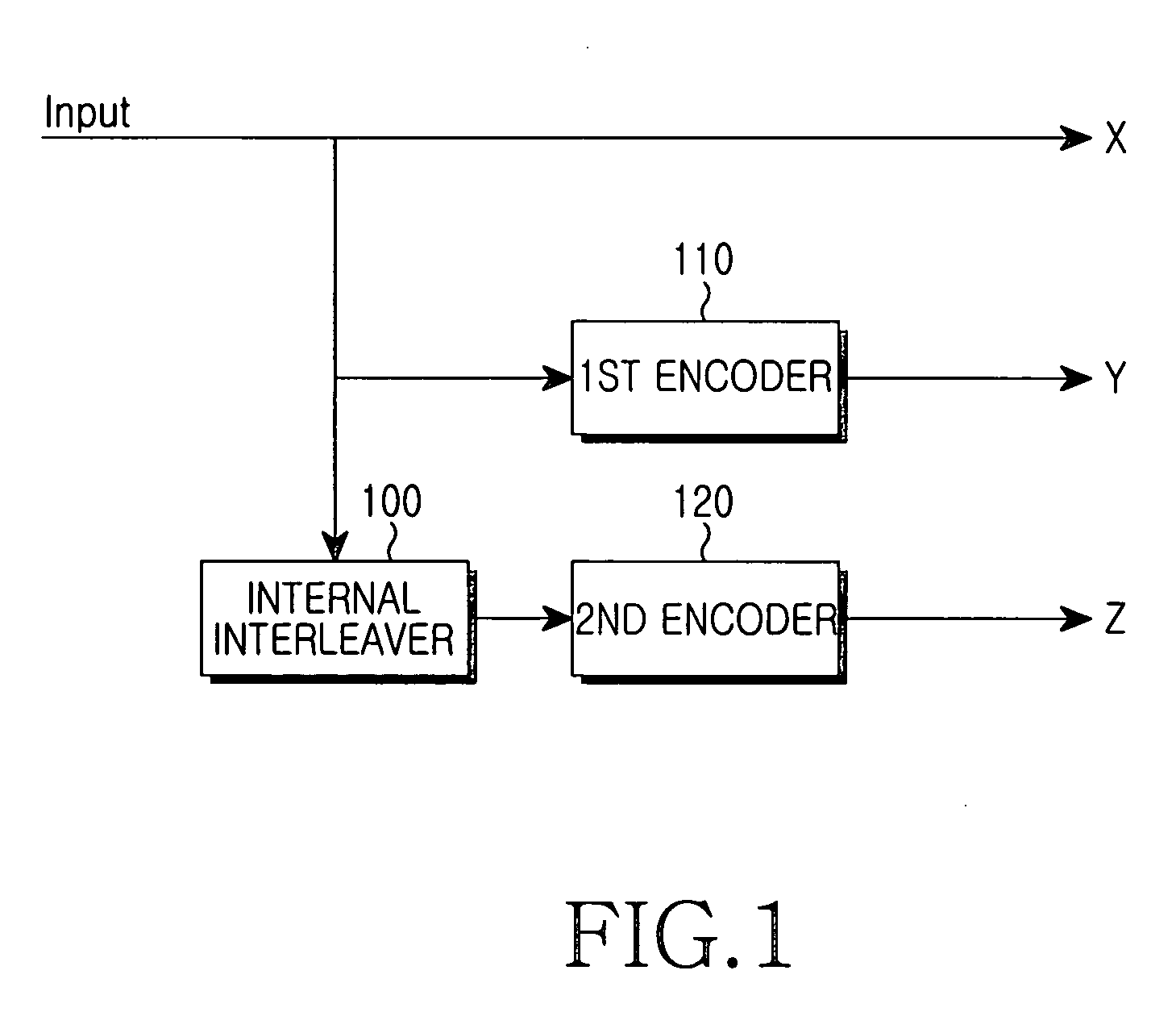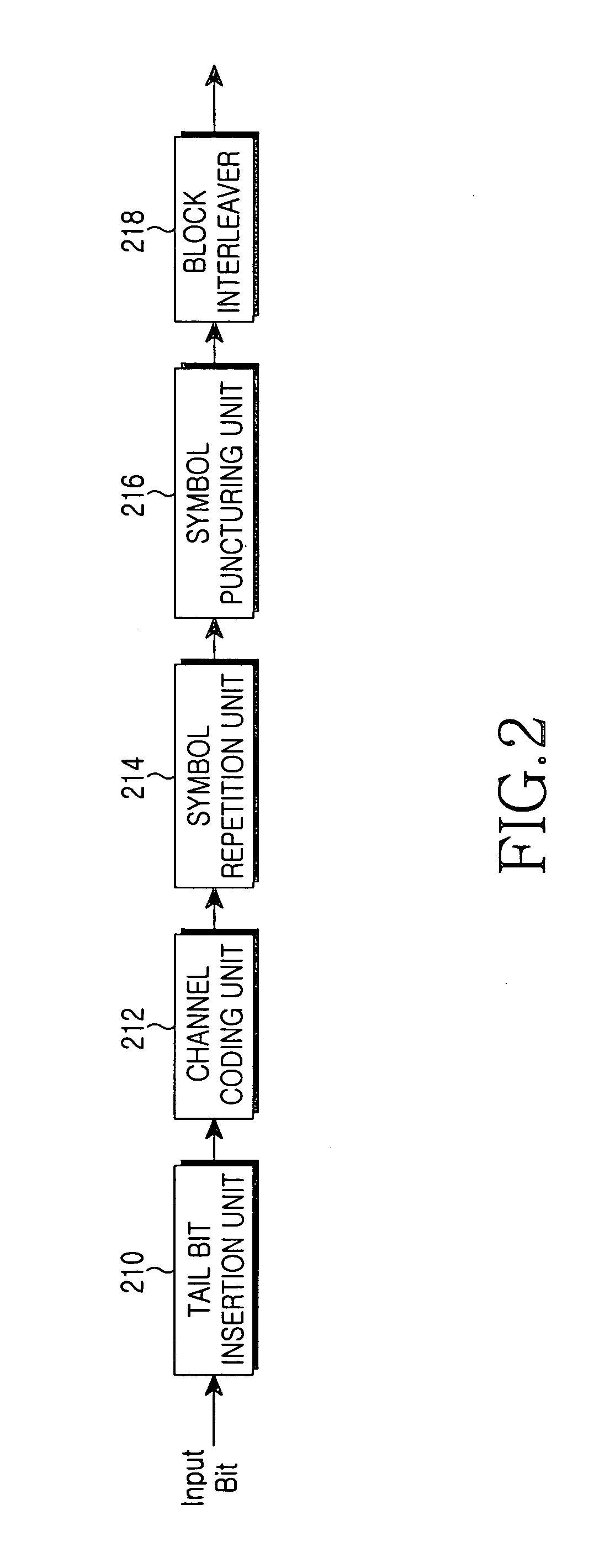Apparatus and method for transmitting/receiving data in a mobile communication system
data technology, applied in the field of apparatus and a mobile communication system for transmitting/receiving data, can solve the problems of signal distortion and noise, difficulty in receiving a signal with no distortion and no noise, and difficulty in correcting a burst error created in the systematic bit or the parity bit, so as to prevent performance degradation
- Summary
- Abstract
- Description
- Claims
- Application Information
AI Technical Summary
Benefits of technology
Problems solved by technology
Method used
Image
Examples
embodiment 1
[0082] Embodiment 1
[0083] Transmitter
[0084] Hereinafter, an operation of a transmitter according to a first embodiment of the present invention will be described with reference to the accompanying drawings.
[0085]FIG. 9 is a block diagram illustrating the transmitter for providing a high-speed packet data service (1xEV-DV) in a synchronous mobile communication system according to the first embodiment of the present invention.
[0086] Referring to FIG. 9, a bit signal, to which a frame quality identifier and a tail bit are added by means of blocks 901 and 903, is output in the form of a coded bit array through a channel coding unit 905. Then, the coded bit array is transferred to a bit interleaver 907 so that the bit interleaver 907 performs a bit interleaving with respect to the coded bit array. After that, a rate matching is performed with respect to the coded bit array through a symbol repetition block 909 and a symbol puncturing block 911. During the rate matching process, a code...
first embodiment
[0087]FIG. 10 is a block diagram illustrating a transmitter for providing a high-speed downlink packet access (HSDPA) in an asynchronous mobile communication system according to the present invention.
[0088] Referring to FIG. 10, a block 1001 creates a cyclic redundancy check (CRC) with respect to a transport block being input and attaches the CRC to the transport block. The transport block having the CRC undergoes a bit scrambling by means of a block 1003. The bit scrambling is necessary to solve an unevenness of average power of a transport symbol generated in a higher modulation scheme. Then, the transport block is segmented into code blocks that match a size of an internal interleaver of the channel coding unit of a block 1005. Thereafter, a block 1007 performs a channel coding with respect to the code blocks so that the code blocks are output in the form of a coded bit array. In addition, a block 1009 performs a bit interleaving with respect to each bit of the coded bit array ou...
embodiment 2
[0130] Embodiment 2
[0131] Hereinafter, a second embodiment of the present invention will now be described with reference to the accompanying drawings.
[0132]FIG. 26 is a block diagram illustrating a transmitter for providing a high-speed packet data service (1xEV-DV) in a synchronous mobile communication system according to the second embodiment of the present invention.
[0133] Referring to FIG. 26, a bit signal, to which a frame quality identifier and a tail bit are added by means of blocks 2601 and 2603, is output in the form of a coded bit array through a channel coding unit 2605. Then, the coded bit array is transferred to an interleaver 2607 so that the coded bit array undergoes a bit interleaving and a block interleaving. After that, a rate matching is performed with respect to the coded bit array through a symbol repetition block 2609 and a symbol puncturing block 2611. During the rate matching process, a coded bit array to be transmitted through the physical channel is deter...
PUM
 Login to View More
Login to View More Abstract
Description
Claims
Application Information
 Login to View More
Login to View More - R&D
- Intellectual Property
- Life Sciences
- Materials
- Tech Scout
- Unparalleled Data Quality
- Higher Quality Content
- 60% Fewer Hallucinations
Browse by: Latest US Patents, China's latest patents, Technical Efficacy Thesaurus, Application Domain, Technology Topic, Popular Technical Reports.
© 2025 PatSnap. All rights reserved.Legal|Privacy policy|Modern Slavery Act Transparency Statement|Sitemap|About US| Contact US: help@patsnap.com



